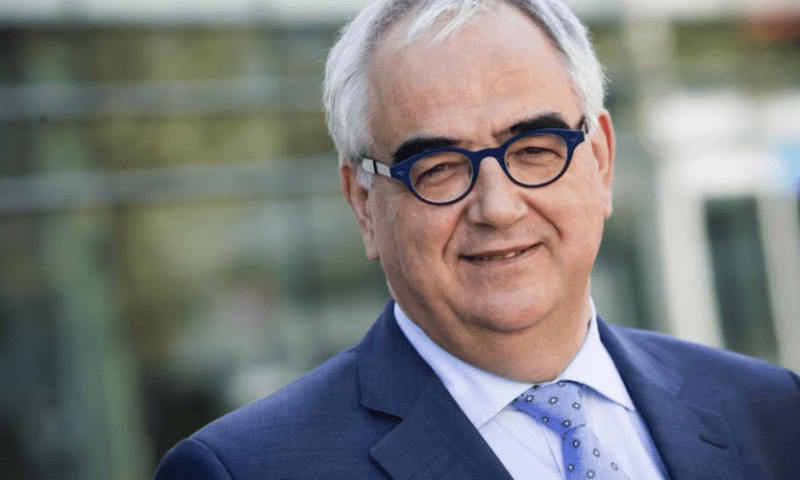Five years may not seem long to turn around a struggling biotech. But that’s the time frame recently installed Galapagos CEO Paul Stoffels, M.D., has given himself to reorient the company around his mantra of: “Let’s focus on the patient.”
He’s only been in the top seat for three months, but Stoffels has wasted no time in making an impact on the business—most evidently in two acquisitions on Wednesday that mark a pivot to CAR-T. The biotech’s pipeline was in urgent need of replenishment after a string of poor data readouts almost emptied the cupboard. Its osteoarthritis therapy failed to make the grade in a phase 2 trial in 2020, while late-stage results ended hopes of an FDA approval for its pulmonary fibrosis candidate last year.
The joint announcement this week that the company will be acquiring CAR-T platform developer CellPoint and human antibody library owner AboundBio for upfront payments of $131.5 million and $14 million, respectively, shows Stoffels is not playing around. CellPoint’s focus is on conducting the CAR-T process at the point of care, cutting down the time to remove, change and return a patient’s T cells from up to three weeks to just seven days. What links the two purchases is Galapagos’ ambition of taking three next-generation CAR-T candidates from AboundBio’s library and running them through the clinic using CellPoint’s tech over the next three years.
It was a meeting with CellPoint’s CEO Tol Trimborn, Ph.D., that made Stoffels realize that there was potential to transform the complex and lengthy CAR-T process, while adding AboundBio was the missing piece of the puzzle. “We have an end-to-end oncology capability from discovery to upscaling and production,” he says. “Being able to bring it to patients was what inspired me to do it.”
Novartis has its own plans to streamline the CAR-T process via its T-charge platform, and Stoffels said Galapagos’ move is underpinned by the “same thinking” that the current process is too complex and lengthy. The difference is that CellPoint aims to conduct this process in the cancer center where the patient is staying, he explains.
The focus of Galapagos’ CAR-T ambitions will initially be the “more straightforward” target of hematological cancers. But there is also a longer-term plan to see whether it can address severe long-term solid cancers with the technology, he adds.
“Always an entrepreneur”
It’s no surprise Stoffels has big plans for the business—as he’s quick to point out, he was a co-founder of Galapagos in 1999. Despite moving on to a string of roles at Johnson & Johnson that culminated in being made chief scientific officer of the world’s largest pharma company, he still has no qualms about leaving the third-highest-paid pharma R&D post to roll up his sleeves and get to work at a biotech.
“I have always been an entrepreneur,” he explains. “When I went to J&J, most of my time I did the same thing. I ran the venture capital group in J&J and drove external collaborations as the source for innovation. That [taught] me how fantastic it is to have so many people working on next-generation science.”
It may be a gear change to downsize from a company of 140,000 staff to just 1,400, but Stoffels says: “It’s as attractive to work in a small company.” Plus there’s the added bonus of the biotech being based in his “backyard” of Mechelen, Belgium. “I got away from jet lags,” he says with a smile.
The deals won’t stop at CAR-T therapies, according to Stoffels. The biotech is on the lookout to both license assets from other companies and to potentially launch another small-scale acquisition of a business with therapies already in the clinic. “That could be within inflammation, it could be within oncology, and maybe select other areas,” he says.
Finding that “sweet spot”
Regardless, Galapagos is likely to be focusing on assets in the “sweet spot” of early-stage clinical development. “Phase two, three—they are typically advanced assets, and they are quite expensive because you’re in competition with all the large companies,” the CEO explains. “We have to create most of the value ourselves, not buy out the value from somebody else.”
It means that Galapagos is unlikely to be signing any billion dollar deals in the near future, unless they can get partner Gilead—with which it signed a $5 billion collaboration in 2019—on board. “Gilead is also interested in looking together with us at what could be opportunities, and then we could do different things jointly with a partner,” he says.
In the meantime, there’s no doubt who’s driving things forward at Galapagos. After Chief Scientific Officer Piet Wigerinck, Ph.D., quit at the height of the company’s troubles last year, Stoffels said there are no immediate plans to recruit a direct successor. Instead he is sharing out some of the role’s responsibilities across different individuals.
“We are recruiting top scientists,” he says. “But I have always had a more therapeutic area focus and platform focus. At the moment, we are not looking for a CSO overseeing it all.”
So back to that five-year plan: what’s the strategy? “It’s a very simple one,” Stoffels says. “We’re going to create years of … quality of life for patients in an accelerated way.
“You can calculate until the cows come home in Excel sheets about how much money you’re going to make. That’s all fine,” he adds. “But it only follows when you have a very good research and development process on medicines which really matter in the world.”

